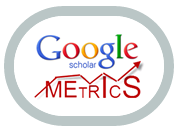ON EMBEDDED CLAUSES IN SHELL NOUNS: SEMANTIC, DISCURSIVE AND COGNITIVE ASPECTS
DOI:
https://doi.org/10.47456/pl.v12i30.38082Abstract
This article aims to analyze semantic, discursive and cognitive aspects that characterize the constructions formed by abstract nouns, “shell nouns” (SCHMID, 2000; 2007; 2018), and by the subordinate clauses linked to them – these are known as “specific constructions” by Raposo et alii (2013). Therefore, based on a cognitive-functional approach, we aim to emphasize that: (1) the understanding and analysis of the so-called “specific constructions” require that the semantic-discursive properties of the shell nouns be considered; (2) the object under investigation constitutes an example of linguistic constructions that are on the border between two categories, a hypothesis predicted by the Prototype Theory (cf. TAYLOR, 2005); (3) the use of abstract names linked to subordinate clauses constitutes a mark of subjectivity with which the speaker can morphosyntatically encode his point of view (TRAUGOTT; DASHER, 2002). To illustrate and highlight the aspects under discussion, we use occurrences of the aforementioned constructions, extracted from the Corpus NOW (News on the web), which integrates Corpus do Português and brings together Brazilian newspapers and magazines, in digital format, produced between 2012 and 2019.
Downloads
Downloads
Published
How to Cite
Issue
Section
License
Copyright (c) 2022 PERcursos Linguísticos

This work is licensed under a Creative Commons Attribution-NonCommercial-NoDerivatives 4.0 International License.
O autor de submissão à Revista PERcursos Linguísticos cede os direitos autorais à editora da revista (Programa de Pós-Graduação em Linguística - UFES), caso a submissão seja aceita para publicação. A responsabilidade do conteúdo dos artigos é exclusiva dos autores. É proibida a submissão integral ou parcial do texto já publicado na revista a qualquer outro periódico.
Os trabalhos aqui apresentados utilizam a licença Creative Commons CC BY: Attribution- NonCommercial- NoDerivatives 4.0 International. Para mais informações, verificar: https://creativecommons.org/licenses/by-nc-nd/4.0/
Os trabalhos na revista são arquivados pelo sistema Rede de Preservação PKP (PKP PN) e LOCKSS









